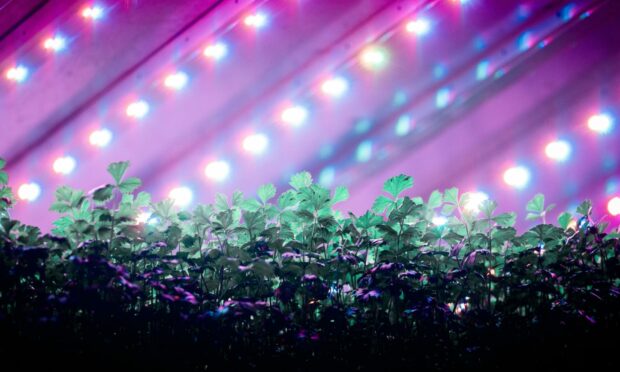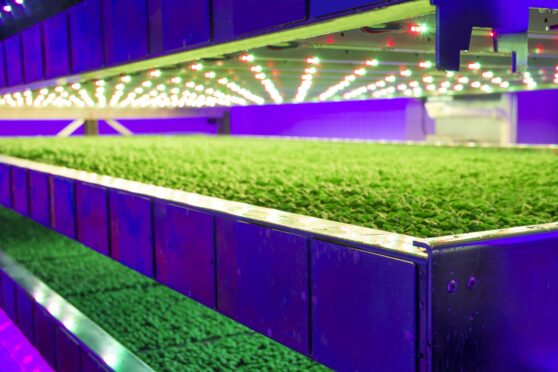A series of sites in the Sidlaws, Ochils and Campsies have been earmarked for the next generation of vertical farms by a consortium of four British companies.
Wind and solar energy together with energy storage would power the hectare-sized sites identified by the V-FAST (Vertical Farms and Storage Technologies) consortium which comprises UK Urban AgriTech (UKUAT), Vertegrow Ltd, Light Science Technologies Ltd and RheEnergise Limited, the UK energy storage company.
The developers say the first project to produce fresh salads and fruit to local populations could be completed by 2025, however they still need to obtain planning permission and secure finance for the estimated £28 million cost.
The cost of energy has been the biggest challenge for the development of vertical farms, but V-FAST says long-duration energy storage (LDES) will provide the answer.
RheEnergise chief executive, Stephen Crosher, said both the food and energy industries are striving to decarbonise and meet environmental goals, and the vertical farms being planned will maximise food production at the lowest cost.
“The advantage of storage collocated with a vertical farm are multiple,” he said.
“We use the same footprint, where the farm takes the upper levels and we utilise the basement, we use the same grid connection – often a significant cost for farming and storage – and the energy storage solution can provide additional local energy services to local consumers, enabling them to benefit from lower energy costs too.”
Simon Deacon, the founder and chief executive of Light Science Technologies added: “As land becomes scarcer and electricity and gas prices are soaring, we urgently need to find alternative farming methods to ensure food security in a more sustainable, energy-efficient way.
“The collaboration presents a unique opportunity to revolutionise the food system in Scotland and to enable the year-round supply of fresh, flavoursome produce with less food miles and a reduced carbon footprint, thereby reducing the UK’s reliance on overseas exports.”

